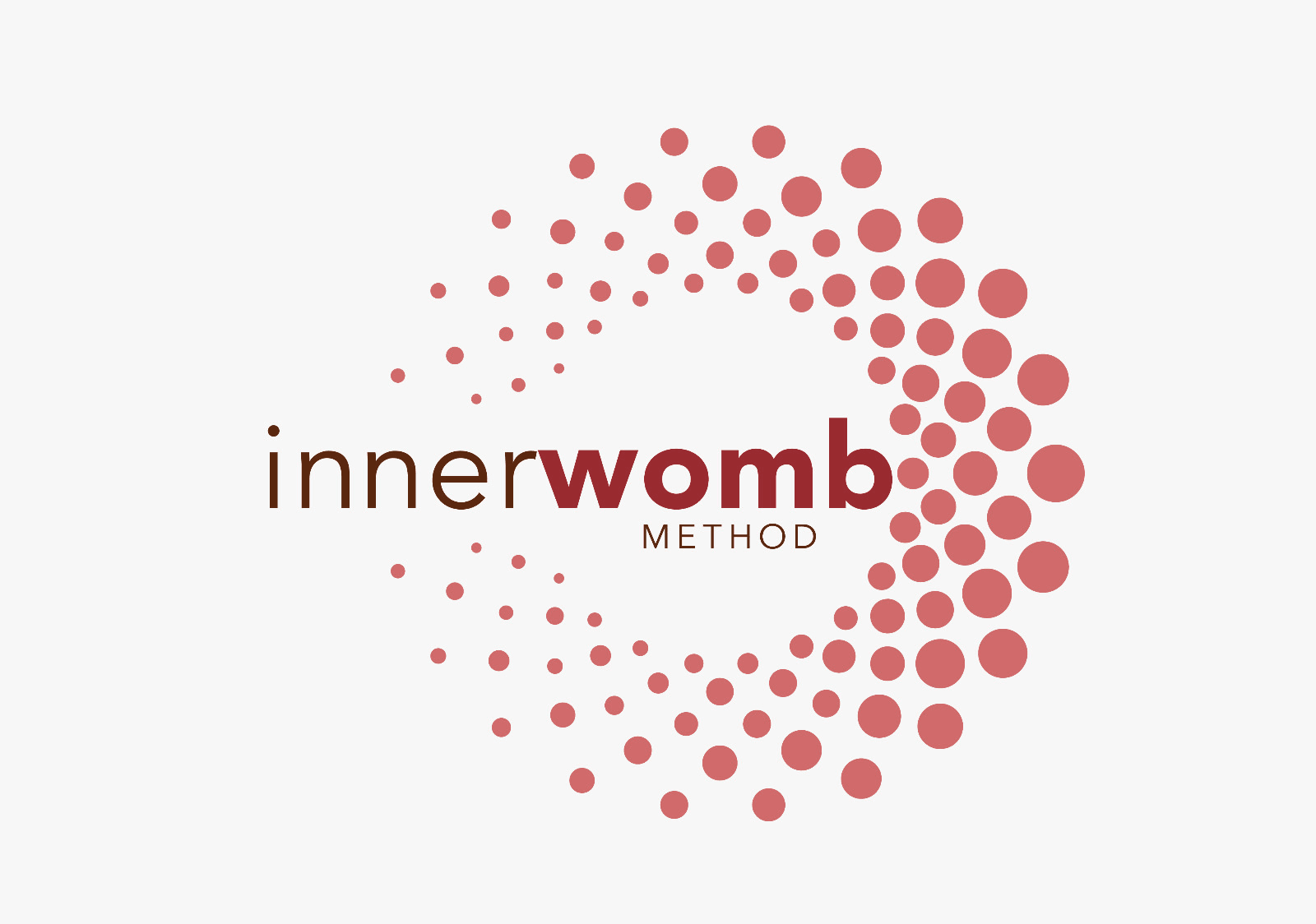Womb Practitioner: Become a Leader in the New Feminine Revolution

Womb practitioners play a vital role in women's health and healing. They focus on emotional and energetic healing related to the womb, helping clients reconnect with their feminine energy. Diana Beaulieu is the leading expert in womb healing. Her online programs provide aspiring womb practitioners with the training needed to develop essential skills and techniques in this transformative field.
Understanding the Womb Practitioner Role

The role of a womb practitioner encompasses various responsibilities and skills essential for facilitating healing and empowerment. This role is vital for women seeking to reconnect with their feminine energy and heal emotional, energetic, and physical wounds associated with their wombs. Understanding this role is the first step towards embracing the transformative potential of womb healing.
The Importance of Womb Healing
Womb healing holds significant importance in contemporary society, particularly for women who have experienced trauma or disconnection from their bodies. This healing process not only addresses physical issues but also delves into emotional and spiritual dimensions. Some key aspects include:
- Emotional Release: We see that many women often carry significant emotional baggage, unresolved grief, or deeply held stress linked to their womb space, which can unfortunately manifest as persistent anxiety, lingering depression, chronic patterns of self-doubt, or even various physical ailments. Womb healing practices offer gentle pathways for an emotional womb awakening and the safe release of these burdens.
- Reconnection with Feminine Energy: Womb healing aids women in reclaiming their inherent feminine power, allowing them to tap into their creativity and intuition.
- Transformation of Trauma: Addressing and healing past traumas associated with the womb can lead to profound personal transformations and a renewed sense of self.
- Spiritual Growth: Through womb healing, individuals can embark on a journey of spiritual discovery, connecting with their inner wisdom and the collective energy of femininity.
Key Responsibilities and Skills Required
The responsibilities of a womb practitioner extend across different facets of healing and guidance. Practitioners must cultivate a blend of skills and knowledge to support their clients effectively. Some critical responsibilities and skills include:
- Facilitating Healing Sessions: Practitioners guide clients through various forms of healing, including somatic practices, guided meditations, and shamanic journeys. This requires a deep understanding of the techniques and the ability to create a safe and nurturing environment.
- Emotional Intelligence: Practitioners must possess high emotional intelligence to connect with clients, understand their emotional states, and provide empathetic support during the healing process.
- Cultural Sensitivity: Given the diverse backgrounds of clients, practitioners should be aware of and respect the cultural contexts of their clients' experiences and beliefs regarding womb healing.
- Continuous Education: The field of womb healing is continuously evolving, making ongoing education and training essential. Practitioners should engage in regular workshops, training sessions, and self-study to enhance their practice.
- Prioritisin Self-Awareness and Personal Healing: We firmly believe that a dedicated womb practitioner's own healing journey is intrinsically interwoven with their ability to effectively support others. Practitioners are consistently encouraged to deeply engage in their own ongoing healing work, cultivate profound self-awareness, and address their personal wounds and biases, thereby enabling them to guide others with greater authenticity, presence, and compassion, truly leading from their embodied experiences of healing my womb.
The Path to Becoming a Womb Practitioner
Becoming a womb practitioner involves a profound journey of knowledge and personal transformation. Through specialized training programs, individuals gain the skills essential to facilitate healing and empowerment in others.
Practitioner Training Levels
The journey to becoming a womb practitioner is structured into distinct training levels, each designed to build on the previous one. This progressive approach allows practitioners to deepen their understanding and enhance their skills over time.
- Level 1: Womb Awakening FacilitatorThis foundational level emphasizes the connection to the physical, emotional, and energetic aspects of the womb. Participants learn core techniques that aid in awakening the womb's energy.
- Understanding womb anatomy and energy flow.
- Facilitating group sessions focused on womb awareness.
- Practicing personal healing exercises.
- Level 2: Womb Healing PractitionerThis intermediate level expands on the concepts introduced in Level 1 by diving deeper into the healing of complex emotional traumas. Practitioners learn to navigate various challenges their clients may face.
- Guiding clients through personalized healing journeys.
- Utilizing techniques to address ancestral wounds and emotional blockages.
- Implementing somatic practices to facilitate healing.
- Level 3: Shamanic Womb PractitionerThe advanced level introduces practitioners to shamanic techniques, allowing them to explore multidimensional healing. This training focuses on transformative practices that honor both individual and collective healing.
- Integrating shamanic journeys into womb healing sessions.
- Exploring the spiritual dimensions of the womb.
- Developing a holistic approach to clients' healing.
Diana Beaulieu's Expertise and Programs
Diana Beaulieu stands out as a premier instructor in the field of womb healing. Her online programs are designed to provide comprehensive training for aspiring womb practitioners.
With a deep knowledge of ancestral and modern healing techniques, Diana’s curriculum is structured to ensure that participants not only learn the required skills but also undergo their own healing processes.
The programs emphasize the following:
- A focus on holistic healing practices.
- Insights into the historical context of womb work.
- Utilization of community support for ongoing growth.
Each training session encourages participants to engage with their own experiences, fostering a safe environment for transformation. This approach ensures that new practitioners are well-equipped to support their clients with empathy and understanding.
Core Techniques in Womb Healing
Core techniques in womb healing are essential for facilitating deep emotional and energetic transformations. These methods draw on ancient wisdom, integrating both modern and traditional practices to enhance healing experiences.
Energetic and Somatic Practices
Energetic and somatic practices focus on the body's innate ability to heal. They harness the body's energy systems while embedding awareness in physical sensations, promoting a holistic approach to womb healing. Key components include:
- Breath Work: This technique emphasizes conscious breathing to release tension and shift energy. Breath work enhances relaxation and connects clients with their body.
- Movement Therapy: Movement allows individuals to express and release stored emotions. Somatic movements can unblock stagnant energies, facilitating healing processes.
- Energy Healing Modalities: Practices like Reiki enable practitioners to channel healing energy. This non-invasive technique can balance the energy field surrounding the womb.
Womb Awakening Meditation
Womb awakening meditation is a transformative practice that promotes deep introspection and connection to the womb space. It enables individuals to tap into their inner wisdom and healing potential. Components of this meditation include:
- Visualization: Practitioners guide clients through visual journeys that connect them to their womb’s energy, facilitating awareness of past traumas.
- Affirmations: Positive affirmations support healing by reinforcing self-love and acceptance. These statements can help reshape negative beliefs surrounding femininity and worth.
- Grounding Techniques: Participants learn to anchor their energy, fostering stability during the meditation. This connection to the earth enhances emotional resilience.
Shamanic Journeys and Their Benefits
Shamanic journeys utilize drumming, music, or guided imagery to enter altered states of consciousness. This ancient technique allows practitioners to explore the depths of the psyche and access ancestral wisdom. Benefits of these journeys include:
- Healing Ancestral Patterns: By connecting with ancestral spirits, clients can identify and transform inherited traumas, providing a path toward healing generational wounds.
- Gaining Insight: Shamanic journeys facilitate encounters with spirit guides or power animals, offering profound insights and guidance on personal healing journeys.
- Energy Release: This practice aids in releasing negative energies that reside within the womb, promoting a sense of renewal and liberation.
Facilitating Healing: Working With Your Clients
Facilitating healing is a vital aspect of the work undertaken by womb practitioners. Building meaningful connections and establishing a nurturing environment allows clients to embark on their healing journeys effectively.
Creating a Safe Space for Transformation
Establishing a safe environment is essential for the healing process. A sanctuary where clients feel comfortable expressing their emotions is critical. This involves:
- Physical Comfort: The space should be inviting and soothing, with comfortable seating, soft lighting, and calming scents. Consider incorporating elements like cushions, blankets, and nature sounds to promote relaxation.
- Emotional Safety: It is crucial to foster an atmosphere where vulnerability is welcomed. Clear communication about boundaries and the confidentiality of discussions helps clients feel secure.
- Cultural Sensitivity: Recognizing and respecting the diverse backgrounds of clients ensures that their unique perspectives are honored. Tailoring interactions and practices to fit individual cultural contexts fosters a deeper connection.
Guiding Clients Through Emotional and Energetic Challenges
Womb practitioners play a critical role in guiding clients as they navigate their emotional and energetic difficulties. Effective strategies include:
- Active Listening: Practitioners should engage in reflective listening. Validating clients' feelings and experiences encourages openness and trust in the healing process.
- Somatic Techniques: Incorporating body-based practices helps clients connect with their physical sensations. Techniques such as breathwork, grounding exercises, and gentle movement can facilitate emotional release and enhance awareness.
- Energetic Practices: Techniques such as energy clearing and visualization can support clients in understanding and transforming their emotional blockages. This approach enhances their ability to process and release pent-up feelings.
Supporting Clients' Personal Healing Journeys
Each client’s healing journey is uniquely their own. Practitioners should approach this with sensitivity, as each individual will have different needs and timelines for their healing. Key supports include:
- Personalized Healing Plans: Collaboratively developing tailored plans ensures that clients feel empowered in their journey. Incorporating specific goals and preferences makes for a more effective healing process.
- Follow-Up and Accountability: Regular check-ins help clients stay engaged in their healing journey. This support enhances their commitment and allows for necessary adjustments in their plans.
- Resource Provision: Supplying clients with additional resources such as guided meditations, reading materials, or community connections can enrich their healing experiences. This promotes self-directed growth and exploration.
Expanding Your Practice: Professional Applications
As practitioners deepen their expertise in womb healing, a variety of professional applications arise. These applications not only enhance individual practice but also contribute significantly to the overall landscape of healing and wellness.
Integrating Womb Healing in Complementary Medicine
Womb healing can be seamlessly integrated into various modalities of complementary medicine. Practitioners can offer unique services that enhance traditional treatments by incorporating holistic approaches. Some popular integrative strategies include:
- Holistic Health AssessmentsUtilizing womb healing perspectives to evaluate overall health, incorporating emotional and spiritual well-being as critical components.
- Nutritional CounselingIncorporating dietary suggestions that support reproductive health and energy balance, helping clients nourish their bodies while healing emotionally and energetically.
- Mind-Body TechniquesCombining techniques such as mindfulness, yoga, or breathwork to support womb healing, enabling clients to connect deeply with their bodies.
Opportunities in Coaching and Psychotherapy
The principles of womb healing are highly complementary to coaching and psychotherapy. By addressing emotional traumas linked to the womb, practitioners can guide clients through profound processes of personal transformation. Key opportunities include:
- Emotional Healing SupportHelping clients identify and process emotions that affect their well-being, especially those related to their feminine energy and personal experiences.
- Trauma-Informed CoachingUtilizing womb healing techniques to provide trauma-informed support, fostering safe environments that encourage vulnerability and healing.
- Building ResilienceIncorporating strategies that empower clients in reclaiming their strength and autonomy, essential for navigating healing journeys.
Educational Roles in Womb Healing
Educators and trainers play a pivotal role in expanding awareness and understanding of womb healing practices. Opportunities within this realm include:
- Facilitating WorkshopsHosting workshops to introduce the principles and practices of womb healing, focusing on connecting participants to their feminine power.
- Certification ProgramsDeveloping and implementing certification programs for aspiring womb practitioners, ensuring quality and standardization in the field.
- Speaking EngagementsParticipating in conferences and seminars to spread knowledge about womb healing and its significance in modern wellness practices.
Addressing Common Questions About Womb Healing
Womb healing has garnered significant attention as individuals seek to understand its benefits and applications. Below are some common questions people have regarding this transformative practice.
Finding Womb Healing Near Me
Locating womb healing practitioners can be a vital step for those seeking emotional and physical rejuvenation. Clinics, wellness centers, and individual practitioners offer a variety of womb healing services. Here are some tips for finding these resources:
- Search online directories specializing in holistic health services.
- Explore community wellness events that may feature womb healing workshops or practitioners.
- Ask for recommendations from friends or health professionals who understand the benefits of womb healing.
- Utilize social media platforms and groups focused on women's health and energy healing to connect with local practitioners.
Exploring Root Causes of Wounding and Trauma
Womb healing often involves delving into the emotional and energetic wounds that impact the reproductive system. Understanding these underlying causes is essential for effective healing. Some common root causes include:
- Past trauma, which may manifest emotionally and physically, affecting one's connection to their femininity.
- Societal and cultural conditioning detracting from self-worth and confidence.
- Generational trauma passed down through family lines, impacting beliefs around sexuality and motherhood.
- Repressed emotions due to societal norms that discourage open expression of feelings related to the womb and feminine energy.
By addressing these root causes, practitioners facilitate a process of healing and empowerment. This often involves techniques such as guided meditations and somatic experiences designed to reconnect individuals with their bodies, allowing them to recognize and transform their pain into healing energy.
Recognition of Patterns
Recognizing personal patterns of wounding is pivotal in womb healing. Many individuals may not be aware of these cycles until they explore them through a supportive environment. Practitioners may employ various methods, including:
- Journaling exercises to express and analyze emotions.
- Movement therapies that integrate body awareness.
- Group discussions to share experiences and foster community healing.
The journey of womb healing is unique for everyone, often requiring patience and a willingness to face difficult emotions. With the right guidance, individuals can unlock profound insights that lead to personal growth and clarity.
Embracing the Journey: Personal and Professional Growth
This journey of personal and professional growth is pivotal for those engaged in womb healing. It provides opportunities for transformative experiences while also empowering practitioners to reclaim their feminine energy.
Transformative Benefits of Practitioner Training
Engaging in practitioner training offers numerous transformative benefits that not only enhance personal growth but also contribute to professional development. These benefits encompass a range of emotional, mental, and spiritual growth opportunities.
- Self-Discovery: Training often leads to deep self-exploration. Practitioners uncover their own wounds and areas that require healing, enabling a richer understanding of their own emotional landscapes.
- Enhanced Empathy: As practitioners work through their experiences, they cultivate a profound empathy that strengthens their ability to support clients effectively. This empathy is essential in navigating the complexities of emotional healing.
- Skill Development: Practitioner programs equip individuals with various techniques, methodologies, and frameworks to facilitate healing. From somatic practices to emotional processing skills, these tools enhance practitioners’ confidence in their abilities.
- Community Connection: Training provides an opportunity to connect with like-minded individuals. This fosters relationships that can blossom into support networks, where experiences and strategies are exchanged.
- Empowerment: Going through the training can fundamentally change how practitioners view themselves, leading to a more empowered, assertive, and authentic life both personally and professionally.
Reclaiming and Empowering Feminine Energy
Practitioner training plays a significant role in reclaiming and empowering feminine energy. By engaging in womb healing practices, individuals not only work on personal wounds but also contribute to a broader cultural shift.
- Restoration of Balance: Feminine energy is often associated with nurturing, creativity, and intuition. Practitioners work to restore balance within themselves, which can lead to healthier relationships and stronger communities.
- Breaking Cycles: Training empowers individuals to confront and break cycles of trauma often linked to the feminine experience. This reclamation helps in diminishing the stigma associated with feminine issues.
- Voice and Expression: Working through womb healing assists practitioners in reclaiming their voices, leading to a more expressive and authentic experience of femininity. This empowerment translates into daily life, impacting personal relationships and community interactions.
- Collective Healing: Emphasizing the importance of shared experiences fosters a sense of collective healing among women. This interconnectedness is crucial for advancing societal acceptance of women’s health issues.
